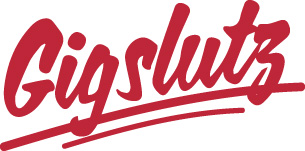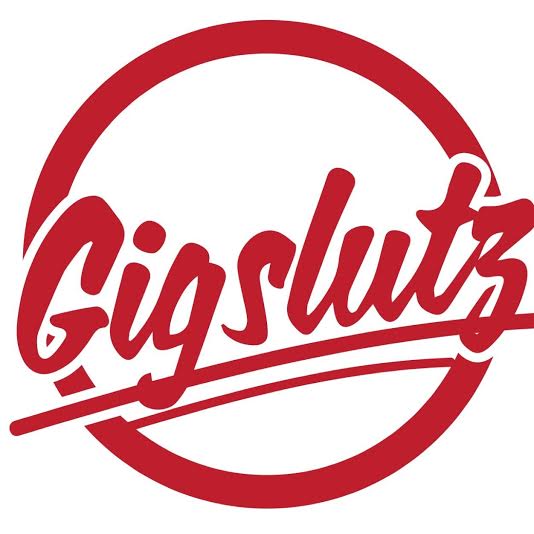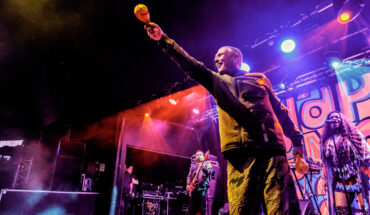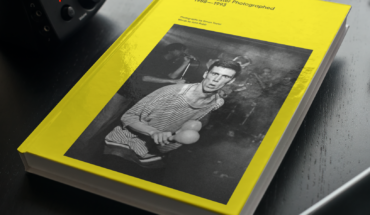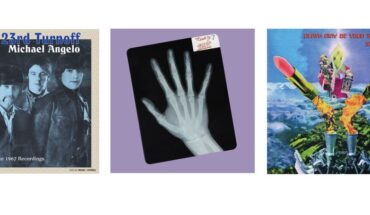With just over a week to go until this year’s Glastonbury Festival, we asked our writers to pick their fave moments from Worthy Farm…
Happy Mondays, 1990
June 1990 and the Happy Mondays are reaching their plateau. Since the release of the epic Bummed in 1988 the band have risen to the top of the indie tree alongside The Stone Roses in a Manchester takeover amidst 26 inch flares, ecstasy and the second Summer Of Love.
The band travelled to the festival on the Friday with their now customary entourage of minders, dealers, gangsters and hangers on. Amongst that crew were some sharp thinking lads, who photocopied the Monday’s backstage passes to sell in the Hacienda and outside the gates, reputedly making £20k in the process. As a result, backstage at Glasto was utter chaos, with hundreds of Manc blaggers taking over. The band were their usual hedonistic selves; Horse allegedly snorted enough coke to stay up from Friday till they their set on Sunday, whilst Shaun sat in the luggage hold of the tour bus allegedly smoking heroin for two days straight.
The gig itself was a roaring success, with the era defining ‘Wrote For Luck’ providing a fitting end to the festival. However, Mr Eavis was not impressed: following almost 300 arrests and £50k worth of damage, he cancelled next year’s festival. When it returned in 1992, a 10 foot fence had been erected. Steve Aston
Pulp, 1995
Stepping in for The Stone Roses is not a job that can be taken lightly. When Pulp took on exactly that challenge at Glastonbury in 1995, they performed a set that can only be described as career defining. Emerging from the shadows to a backdrop of searing drones, taking a single photograph of the crowd before them, the Sheffield misfits took charge of the country’s most established festival – and nothing has been the same since.
Jarvis Cocker’s distinctive stage presence cast it’s spell upon the nation – throwing his lanky frame into distinctive shapes from the forefront of the stage, he hypnotised the crowd. Their set might have served to mark the start of their reign of popularity, but fifteen years in the build-up mean that looking back, every song is now an instantly-recognisable hit.
It might have taken them fifteen years to get there, but on The Pyramid Stage in 1995, all the hard work paid off. “We rule!”, Cocker declared of the generation, his spirit-of-the-moment comment unknowingly foreshadowing the chart-topping success the band were about to achieve. This was the moment it all happened. Jess Goodman
Radiohead, 1997
There are few bands who reinvent themselves from album to album. Fewer still who manage to do so without shrugging off the successes of their past as belonging to another time. For Radiohead fans, Glastonbury 1997 reads more like a greatest hits retrospective than anything when re-watched in the twenty-first century; and yet something that strikes me when I do sit down to do just that is how perfectly similar their live performance is today. They don’t speak into the microphone much, one song rolls into another, their sound (including Thom Yorke’s voice) is so ridiculously pitch-perfect, it’s hard to tell if they’re miming along to their records – but the atmosphere is nothing short of electrifying.
They’re just as likely to start a set with ‘Lucky’ in 2015 as they were then; just as likely to floor people with a performance of ‘Paranoid Android’ on an acoustic guitar filtered through 50 effects units that suck your brain into a warp and turn it into mush. What band can draw people with as much conviction, by doing as little? Who can possibly create something as exciting without shouting pleas into the audience to ‘sing louder’ every five seconds? Radiohead are Radiohead – and that’s all that keeps everyone hanging on their every note. I challenge you to find a Glastonbury performance like it. Pete Cary
REM, 1999
Glastonbury Festival will always have a special place in my heart for many reasons, but one year has particular significance: 1999 was a year to remember. Years on, its memory still lingers, not because it was roasting hot for a change, not because it was the first year I was an actual fully fledged Glasto performer with a special pass and private campsite; no, the memory that remains is one of great sadness. 1999 was the year that marked the death of Michael Eavis’ wife Jean.
Music, of course, can be many things; sometimes it can be emotional uplifting, sometimes spirit crushingly depressing, sometimes amazingly exciting and fun, but most of all it can be the great social leveller. Bringing people together from all walks of life to share an experience, that being the joy of music and, well, life. That year REM headlined the Pyramid Stage on Saturday night, and as Michael Stipe dedicated ‘The Great Beyond’ to Michael Eavis’ late wife, a field fell silent. I cried. The man next to me cried. We all cried. Powerful. The lyrics still resonate now: “I’m breaking through / I’m bending spoons / I’m keeping flowers in full bloom / I’m looking for answers from the great beyond.” Dan Smith
David Bowie, 2000
In the days before Kate Moss had glamorised the festival, the BBC decided it would be a bit of a hoot to send Boris Johnson down to Glastonbury to hang out with all the counter culture crusties. In a jester hat with his new henna tattoo, he stood atop of the stone circle and declared in full buffoonery that “Glaaarse-stun-berry” was a capitalist extravaganza with a 120,000 punters all paying £100 a ticket. “I jumped over the fence,” came one heckled response, “D’you wanna buy some shrooms?”
By Sunday it was more like 300,000 people as the flimsy perimeter walls completely fell down and chancers from all over Britain flocked on to site. Utterly overwhelmed, the anarchic edge became chaotic and there was a real danger that things could turn nasty – a few weeks later nine people were crushed to death at Denmark’s Roskilde Festival in similar circumstances. Returning to the festival after thirty years, David Bowie was the ring master who united the carnage.
He was experimenting with drum and bass at the time, but turned up with long, crimped locks looking like a Regency dandy and brought out a storming greatest hits set that included ‘Ashes to Ashes’, ‘Changes’, ‘Ziggy Stardust’ and ‘Golden Years’. “Bowie, I love you… but what have you done to your barnet?” was the assessment of a rather worse for wear chap stood beside me, shortly before he passed out and fell face first into a smouldering camp fire.
‘Rebel Rebel’, ‘Starman’ and an immense version of ‘Heroes’ were personal highlights, as the Thin White Duke bridged the divide between the hippy roots of the festival and a new era of mega-star, rock legends headlining the Pyramid Stage. Michael Eavis abandoned things for a year afterwards and nearly lost his license permanently, but Bowie turned the show into a big live television event for the first time and helped attract more huge names to the festival. Glastonbury would never be the same again. Kevin Irwin
Arctic Monkeys, 2007
It seems a lifetime ago now to think about Alex Turner without his comb, raking through his hair as he sings in his newly found Atlantic, neutralised vocal style. Backtracking eight years, we return to an Arctic Monkeys who were about to step foot onto the Pyramid Stage and show everyone why they would to become one of the most vital bands in the world. Back then, Turner oozed charisma, rather than the arrogance that has come to define his personality, with the requisite amount of impotence and cheek to pull off a line like, “And they said we didn’t have enough tunes to headline Glastonbury”.
To this day, I consider the performance to be their best – a group of young, feeble lads embarking on their pursuit of world domination, and although they may have changed along the way, this was a magical milestone of that journey. The band ploughed through tracks from their first two albums, and also welcomed some special guests, including Dizzee Rascal, who burst onto the stage to rap on ‘Temptation Greets You Like A Naughty Friend’, and Shirley Bassey with a rendition of ‘Diamonds Are Forever’. All in all, this performance was exactly what AM fans hoped it would be.
When Arctic Monkeys returned to take on the Pyramid Stage again in 2013, they seemed a completely different band. With their personas now outweighed with arrogance over charm, and their performance somewhat tarnished with additions of slower tracks from the underwhelming, something was missing – something last seen on this scale back in 2007 on Worthy Farm. James Cummins
Iggy & The Stooges, 2007
After days of leaden skies and constant drizzle, Worthy Farm had become a dank, sludgy open sewer festering with crowds of pale, cagoule-clad zombies. A shell shocked Polish kid manned a lonesome, skid stained Mr Whippy van in the Other Stage field, and we huddled by it, shivering and glugging our remaining box of red wine, as flaccid indie bores Editors mocked us with their mediocrity. We would have moved on, but by now our boots had welded into the claggy swamp below and nobody was speaking.
Our saviour came in the form of a leather skinned, long-haired, shirtless 60-year-old. Manic and muscly, Iggy Pop was still every inch the deviant, freak-rock icon, tearing across stage, limbs flailing and groin gyrating as the original Stooges line-up ground out a snarling, pervy, blistering throng. ‘1969’ segued into ‘I Wanna Be Your Dog’ and this yelping, barking, mad man grew wild eyed and started screaming – “Fuck it, get up here. I can’t stand this bullshit anymore. Take OVVVVEERRRR!!!!!!”
As ‘Real Cool Time’ and ‘No Fun’ raged on, mud crusted creatures hurtled forward from every angle, clambering and slipping over the barriers. Dreadlocked stoner kids were sent flying by burly security guards, but the stage soon turned into a chaotic, bouncing mass of human wreckage. It was a fantastic, anarchic sight that cut through all the crap and jolted us out of our slumped misery. It was the goddamn Stooges in their full savage glory and for a brief moment it blew away everything else we’d had to endure that weekend. Kevin Irwin
Gorillaz, 2010
In terms of iconic Glastonbury performances, Jamie Hewlett and Damon Albarn’s mighty Gorillaz taking over Worthy Farm in 2010 stands out for me. Their performance on the Pyramid Stage as part of the festival’s 40th anniversary celebrations had just about everything. Ranging from the mesmerising animations and on-screen effects you come to expect from any Gorillaz live show, right through to a magnitude of cameos from legends such as Shaun Ryder, Mick Jones, Paul Simonon, Lou Reed and Bobby Womack.
One thing that sticks with me in hindsight is Bobby Womack enjoying one last moment in the spotlight before his passing. The combo of Womack and Albarn on ‘Stylo’ provided audience and viewers with a once in a lifetime spectacle. A spectacle capped off by the masterful pull of Snoop Dogg and Albarn embracing on ‘Clint Eastwood’ in a move that shook Worthy Farm up good and proper and still makes the hairs on the back of my neck stand up. A fitting way to close something truly big time that will live long in the memories of many Gorillaz fans and Glastonbury goers alike. Jake Marley
Jake Bugg, 2011
At Glastonbury 2011, something special was in the air. Regardless of the legal highs and vast amounts of alcohol, Glastonbury goers were about to witness a new wave of artists who would later become some of the biggest artists in the UK music scene. 17 year old Jake Bugg was one of these people.
Appearing on a sunny afternoon on the BBC Introducing Stage, Bugg strolled onto the small stage in front of a few hundred attendees. Playing his own work which was inspired by The Beatles and Bob Dylan, Jake Bugg was an easy crowd pleaser. The intimate set will always remain one of my personal favourite Glastonbury moments because I always remember watching him in awe and thinking, ‘This is the future of the indie music scene and I’ve just witnessed it.’ Brigid Harrison-Draper
